一、毕业论文(设计)文本构成 2
二、毕业论文内容要求 2
(一)前置部分 2
1.1 英文封面 2
1.2 承诺书 2
1.3 英文摘要 3
1.4 中文摘要 3
1.5 关键词 3
1.6 英文目录 3
(二)正文部分 3
2.1 引言 3
2.2 主体 3
2.3 论文中的章、节、条、款各级标题 4
2.4 结论 4
2.5 参考文献 4
2.6 致谢 5
(三)附录部分 6
三、毕业论文撰写及印刷要求 6
四、关于2021届翻译本科论文写作及格式设置的补充说明 7
一、毕业论文(设计)文本构成
(一)前置部分:
英文封面(Cover page)
承诺书(Letter of commitment)(附件1)
英文摘要(Abstract)+ 英文关键词(Key words)(附件2)
中文摘要 + 中文关键词(附件3)
英文目录(Contents)(附件4)
(二)正文部分:
引言(Introduction)
毕业论文(设计)主体(Body)
结论(Conclusion)
参考文献(Bibliography)(附件5)
致谢(Acknowledgements)(附件6)
(三)附录部分:
附录(Appendix)(必要时)(附件7)
二、毕业论文内容要求
(一)前置部分
1.1 英文封面
见参考样例。
1.2 承诺书
诚信承诺书按照教务处统一格式的要求打印,该页独立成一页,附于英文封面页后。填写要求:(1)学生用标准A4打印纸打印,装订在学生毕业论文中,编页码为大写罗马数字I ;(2)签名需用黑色签字笔,由毕业设计(论文)作者签名,日期填写完整。
1.3 英文摘要
英文摘要应与中文摘要一致,并要符合英语语法,无语言错误,语句通顺,文字表达自然流畅。英文摘要编页码为大写罗马数字II。英文摘要只能写一页!
1.4 中文摘要
摘要必须是对全文内容的高度概括,应反映出毕业论文的内容、方法、成果和结论,不能过于简略,要语句通顺,文字流畅。摘要中不宜使用公式、图表、不标注引用文献编号。中文摘要编页码为大写罗马数字III,中文摘要以350字左右为宜。中文摘要只能写一页!
1.5 关键词
关键词是供检索用的主题词条,应采用能覆盖论文主要内容的通用词条。关键词一般为3-5个,按词条的外延层次排列,外延大的排在前面。英文的关键词应与中文关键词一致。
1.6 英文目录
以文章内容的先后为序,按段落标题编写,要求标题层次清晰。目录中的标题要与正文中标题一致,目录中应包括引言、论文主体、结论、参考文献、致谢、附录等。目录中的页码要与正文中的页码一致。目录页编写页码为大写罗马数字IV。
注意:目录中不得出现承诺书、中文和英文摘要。
(二)正文部分
2.1 引言
引言或绪论,应对与选题相关的国内外文献进行综述。其主要内容包括:选题的背景及意义;国内外研究状况和相关领域中已有的成果;尚待进一步研究和解决的问题;研究方法;论文结构等。
2.2 主体
主体是毕业论文正文的主要部分,要求结构合理、层次清楚、重点突出、文字简练、通顺,无科学性错误。凡引用、转述、参考他人的成果或资料,均须注明出处。
2.3 论文中的章、节、条、款各级标题
论文正文中各标题要突出重点、简明扼要,不得使用标点符号。标题中尽量不采用英文缩写词,对必须采用者,应使用本学科的通用缩写词。论文正文的层次应根据实际需要而定。
2.4 结论
结论单独作为一章,结论是毕业论文的总结,是整篇论文的归宿,要求精炼、准确地概述论文的主要发现、不足等。
注意:正文的页码需要重新编辑,从阿拉伯数字1开始编辑!
2.5 参考文献
按照作者姓名首字母排列,不按照文中出现顺序排列,外文在前,中文在后,用中括号的数字连续编号,顶格书写,序号后空一格,同正文1.5倍行距。
u 文中参考文献标注需用小括号。(见附件)
直接引用的格式为:(作者,年份:页码),若在作者名称之后标注,则格式为:(年份:页码),间接引用可以不用标注页码。
正文中引用的作者名称无论中英文都写全名,中文作者名用拼音标注,不用中文。
u 最后参考文献条目需写全项目。(见附件)
专著需标明出版社地点及名称,期刊和论文集析出文献的引用要在参考文献条目的年份后标明页码范围。
参考文献一定要有文献类型标识符!文献类型标识符用 [ ] 标识!
根据GB3469规定,以单字母方式标识以下各种参考文献类型:
参考文献类型 |
专著 |
论文集 |
报纸文章 |
期刊文章 |
学位论文 |
报告 |
标准 |
专利 |
文献类型标识 |
M |
C |
N |
J |
D |
R |
S |
P |
对于专著、论文集中的析出文献,其文献类型标识建议采用单字母“A”;对于其他未说明的文献类型,建议采用单字母“Z”。
对于数据库(database)、计算机程序(computer program)及电子公告(electronic bulletin board)等电子文献类型的参考文献,建议以下列双字母作为标识:
电子参考文献类型 |
数据库 |
计算机程序 |
电子公告 |
电子文献类型标识 |
DB |
CP |
EB |
电子文献的载体类型及其标识:
对于非纸张型载体的电子文献,当被引用为参考文献时需在参考文献类型标识中同时标明其载体类型。本规范建议采用双字母表示电子文献载体类型:磁带(magnetic tape)——MT,磁盘(disk)——DK,光盘(CD-ROM)——CD,联机网络(online)——OL,并以下列格式表示包括了文献载体类型的参考文献类型标识:
[文献类型标识/载体类型标识]
如:[DB/OL]——联机网上数据库(database online)
[DB/MT]——磁带数据库(database on magnetic tape)
[M/CD]——光盘图书(monograph on CD-ROM)
[CP/DK]——磁盘软件(computer program on disk)
[J/OL]——网上期刊(serial online)
[EB/OL]——网上电子公告(electronic bulletin board online)
2.6 致谢
致谢中主要感谢导师和对论文工作有直接贡献及帮助的人士和单位。
(三)附录部分
附录
对于一些不宜放入正文中、但作为毕业论文又是不可缺少的部分,或有重要参考价值的内容,可编入毕业论文的附录中。例如,调查问卷、过长的公式推导、重复性的数据、图表、语料全文及其说明等。
三、毕业论文撰写及印刷要求
1.文字和字数
毕业论文(设计)的字数要求(从Introduction开始计算,到Conclusion结束):
英文:6000词左右(6000-6300之间浮动。论文字数若达不到要求,论文成绩直接为不合格!!)
2.打印
论文要求由学生本人录入;打印为A4幅面白纸上。
具体说明:
英文封面、承诺书、中文摘要、英文摘要、英文目录、参考文献和致谢页要求单面打印,如果目录内容超过一页的话就双面打印;
正文部分(即从Introduction开始至Conclusion结束)双面打印。
3. 字体和字号等具体格式要求(详见附件)
四、关于2021届翻译本科论文写作及格式设置的补充说明
1. 论文检测
所有论文必须有查重报告!所有同学一定要在论文答辩前提交给自己的论文指导老师。论文查重报告中的“文字复制比”应为20%以下,可以视为合格;如果超过此比例,则视为不合格,论文修改后再次检测,如果仍超过20%的,则延迟至下一年答辩。
2. 页眉与页脚的设置与字体
页眉顶端为1.5厘米,页脚底端为1.7厘米。页码的字体为Times New Roman,小五号字。页眉与页脚的距离设置,如下图所示:

3. Bibliography中的字体设置
(1)Bibliography中的序号,如“[1]”,用Times New Roman字体,中括号输入要保证在英文状态下输入。
(2)如果文献过长,出现两行或三行的,请使用悬挂缩进。请注意:悬挂缩进的字符数,并不是固定的!!!!有些格式可能要设置为1.5字符/1.55字符/1.6字符/1.65字符/1.7字符等(数字在英文状态下,直接按键盘输入即可,然后自己看效果)。总的原则为:第二行或第三行与作者的第一个名字保持对齐,美观即可。例如:
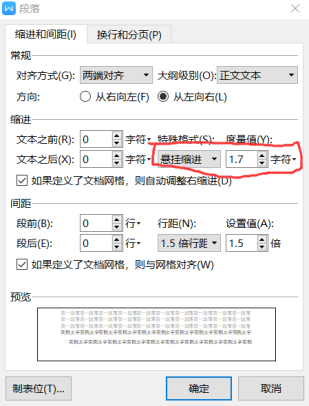



本科毕业论文(设计、调查报告)
(2021届)
学 院 ___________________________________
专 业 ___________________________________
题 目 ___________________________________
学生姓名 _____________学 号____________
指导教师1______________职称/学位____________
指导教师2______________职称/学位____________
安徽外国语学院教务处印制
The Study of Advertising English Translation Strategies from the Perspective of Skopos Theory
By Wang Tong
A thesis
Submitted to School of English Languages
Anhui International Studies University
For the degree of
Bachelor of Arts
Supervised by
Xu Guangxia
May 2020
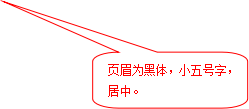 附件1(在论文写作时,去掉“附件1”这三个字)
附件1(在论文写作时,去掉“附件1”这三个字)
承诺书
我谨在此承诺:本人已认真学习并知晓教育部《学位论文作假行为处理办法》的全部内容。
本人承诺恪守学术道德和学术规范,在指导教师指导下独立完成学位论文。本人郑重声明:所呈交的学位论文,是本人在导师的指导下,独立进行研究工作所取得的成果。除文中已经注明引用的内容外,本学位论文不含任何其他个人或集体已经发表或撰写过的作品成果。对本论文所涉及的研究工作做出贡献的其他个人和集体,均已在文中以明确的方式标明。本学位论文的知识产权归属于培养单位。
如本人存在(一)购买、出售学位论文或者组织学位论文买卖的; (二)由他人代写、为他人代写学位论文或者组织学位论文代写的; (三)剽窃他人作品和学术成果的; (四)伪造数据的; (五)有其他严重学位论文作假行为等以上情形,本人愿意接受学校按有关规定给予的处理,并承担相应责任。
特此确认。
承诺人:
学 号:
 年 月 日
年 月 日
 附件2(在论文写作时,去掉“附件2”这三个字)
附件2(在论文写作时,去掉“附件2”这三个字)
 The Study of Translation Strategies of Advertising English from the Perspective of Skopos Theory
The Study of Translation Strategies of Advertising English from the Perspective of Skopos Theory


 Abstract
Abstract
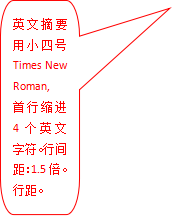 With the development of the integration of world economy and trade, the market is increasingly pressing for talents with foreign language expertise and certain translation ability. In the practice of advertising English translation, the research on the stylistic characteristics of advertising English and its translation strategies is particularly important. The translator’s cognition and application of advertising is not enough. The theoretical knowledge of the style, vocabulary and grammar of advertising English has not been thoroughly implemented in practice. Therefore, it is necessary to further analyze the stylistic characteristics of advertising English and study the translation strategies of advertising English.
With the development of the integration of world economy and trade, the market is increasingly pressing for talents with foreign language expertise and certain translation ability. In the practice of advertising English translation, the research on the stylistic characteristics of advertising English and its translation strategies is particularly important. The translator’s cognition and application of advertising is not enough. The theoretical knowledge of the style, vocabulary and grammar of advertising English has not been thoroughly implemented in practice. Therefore, it is necessary to further analyze the stylistic characteristics of advertising English and study the translation strategies of advertising English.

 This thesis is divided into five parts. The first chapter mainly introduces the importance of the thesis research and the main contents of the thesis. The second chapter briefly introduces the basic contents of skopos theory, including definition, main contents and principles. The third chapter briefly introduces the relevant contents of advertising English, including advertising English rhetoric, lexical and syntactic features. The fourth chapter explains the particularity and strategies of advertising English translation. Chapter five mainly states the main findings of the paper, points out the deficiencies of the paper and puts forward further suggestions about this topic.
This thesis is divided into five parts. The first chapter mainly introduces the importance of the thesis research and the main contents of the thesis. The second chapter briefly introduces the basic contents of skopos theory, including definition, main contents and principles. The third chapter briefly introduces the relevant contents of advertising English, including advertising English rhetoric, lexical and syntactic features. The fourth chapter explains the particularity and strategies of advertising English translation. Chapter five mainly states the main findings of the paper, points out the deficiencies of the paper and puts forward further suggestions about this topic.
 Key words: skopos theory advertising English language feature translation strategy
Key words: skopos theory advertising English language feature translation strategy

 附件3(在论文写作时,去掉“附件3”这三个字)
附件3(在论文写作时,去掉“附件3”这三个字)
目的论视角下的广告英语翻译策略研究



 摘要
摘要
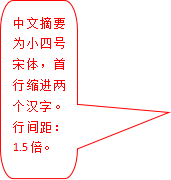 随着世界经济贸易一体化的发展,市场对于具有外语专业知识又有一定翻译能力的人才需求愈加迫切。在广告英语翻译的实践中,广告英语的文体特点及其翻译策略的相关研究尤为重要。翻译者对于广告的认知以及应用并不充分,广告英语的文体、词汇、语法相关方面的理论知识在实践中并未透彻落实。因此,需要进一步加强对于广告英语的文体特点进行剖析并对广告英语的翻译策略进行研究。
随着世界经济贸易一体化的发展,市场对于具有外语专业知识又有一定翻译能力的人才需求愈加迫切。在广告英语翻译的实践中,广告英语的文体特点及其翻译策略的相关研究尤为重要。翻译者对于广告的认知以及应用并不充分,广告英语的文体、词汇、语法相关方面的理论知识在实践中并未透彻落实。因此,需要进一步加强对于广告英语的文体特点进行剖析并对广告英语的翻译策略进行研究。
 本文分为五个部分,第一章主要介绍了论文研究的重要性和论文的主要内容。第二章简要介绍了目的论的基本内容,包括定义,主要内容以及原则。第三章,简要介绍了广告英语的相关内容,包括广告英语修辞,词汇特征和句法特征。第四章阐述了广告英语翻译的特殊性和翻译策略。第五章主要陈述了论文的主要发现同时也指出了论文的不足,最后提出该研究的相关建议和意见。
本文分为五个部分,第一章主要介绍了论文研究的重要性和论文的主要内容。第二章简要介绍了目的论的基本内容,包括定义,主要内容以及原则。第三章,简要介绍了广告英语的相关内容,包括广告英语修辞,词汇特征和句法特征。第四章阐述了广告英语翻译的特殊性和翻译策略。第五章主要陈述了论文的主要发现同时也指出了论文的不足,最后提出该研究的相关建议和意见。
关键词:目的论 广告英语 语言特征 翻译策略


附件4(在论文写作时,去掉“附件4”这三个字)
 Contents
Contents
I Introduction
II The Brief Introduction of Skopos Theory
2.1 The Definition of Skopos Theory
2.2 The Main Contents of Skopos Theory
2.3 The Main Principles in Skopos Theory
III The Brief Introduction of Language Features of Advertising English
3.1 Rhetorical Features of Advertising English
3.1.1 Metaphor
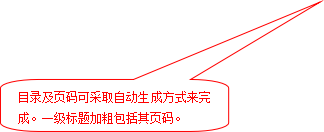 3.1.2 Pun
3.1.2 Pun
3.1.3 Personification
3.2 Vocabulary Features of Advertising English
3.2.1 The Usage of Adjectives
3.2.2 The Repetition of Key Words
3.2.3 The Usage of Simple Words
3.3 Syntactic Features of Advertising English
3.3.1 Imperative Sentences
3.3.2 Interrogative Sentences
IV Translation Strategies of Advertising English
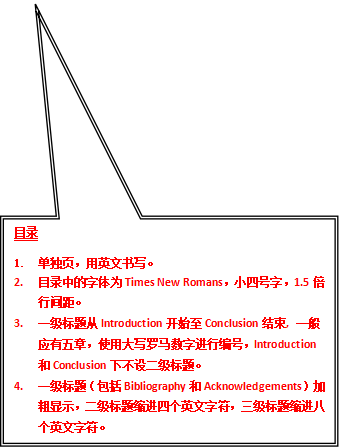 4.1 The Particularity of Advertising English
4.1 The Particularity of Advertising English
4.2 The Translation Strategies of Advertising English
4.2.1. Literal Translation Based on Fidelity Rule
4.2.2. Free Translation Based on Coherence Rule
4.2.3 Creative Translation Based on Skopos Rule
Ⅴ Conclusion 23
I Introduction
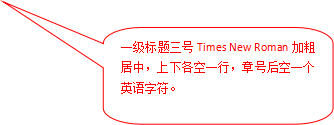
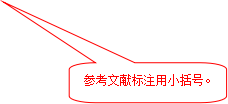 Nowadays, modern society is an era of rapid development of the Internet and scientific technological information. With the continuous development of the times, people are no longer just satisfied with the improvement of hardware measures, and the progress of cultural undertaking has become more and more important. With the rapid dissemination of information, advertisements can be transmitted from one country to another country within seconds. In this case, whether an advertisement can achieve the same effect in another country dep
Nowadays, modern society is an era of rapid development of the Internet and scientific technological information. With the continuous development of the times, people are no longer just satisfied with the improvement of hardware measures, and the progress of cultural undertaking has become more and more important. With the rapid dissemination of information, advertisements can be transmitted from one country to another country within seconds. In this case, whether an advertisement can achieve the same effect in another country dep ends largely on the translation of advertisements. Advertisements have a wide range of different types, including public service advertisements, stylistic advertisements, product advertisements and image advertisements. In addition, many scholars have conducted investigations and researches on the study of translation strategies of advertising English from skopos theory, thereby strengthening the cultural input and output of the country. At the same time, the market also needs a group of capable translators. Advertising English is becoming more and more widely used in translation field. The study of skopos theory, the features of advertising English and translation strategies have become more and more important in practice. The style, vocabulary, grammar and other theoretical knowledge of advertising English has not yet been fully implemented in practice. Therefore, it is important for translators to analyze the skopos theory in this paper, the language features of advertising English and study the translation strategies of advertising English. In order to further develop advertising English and improve international cultural exchanges, many experts and researchers have studied this topic. In 2018, Zhu Yanhua published Advertising English Translation Strategies from the Perspective of Skopos Theory in the Journal of Huanggang Vocational and Technical College. The author expounded the “function of advertising English.” (Zhu Yanhua, 2018) In addition, many researchers have edited a large number of papers. Hong Ying and Peng Yifan pointed out the specific problems and solutions in English translation of advertising in the article On the Translation Strategies of English Advertising Slogans. In addition, Chen Keqing “introduced the syntactic features of advertising English in the article On Syntactic Features of Advertising English.” (Chen Keqing, 1997) By analyzing these features, the author mentioned some typical sentences in translation of advertising English. Gu Guosheng published an article entitled Research on Advertising English Translation Guided by Functional Equivalence, which describes some common concepts of functional equivalence and helps to understand advertising English (Gu Guosheng, 2017) Cheng Sijia and Gao Hongyun wrote a paper called English Strategy for Cosmetics Advertising Guided by skopos theory, which stated that “under the guidance of translation theory, translators respect the original on the basis, translation strategies such as literal translation, free translation can be adopted to make the translation achieve the desired effect.” (Cheng Sijia & Gao Hongyun, 2019) In addition to these journals and papers, some scholars also gave rich English examples vividly in the content of the article. These books and papers provide the theoretical basis in their articles. Different perspectives are recorded in books, articles, essays and newspapers, which provide readers with more guidance on the study of skopos theory and style characteristics of advertising English and translation strategies.
ends largely on the translation of advertisements. Advertisements have a wide range of different types, including public service advertisements, stylistic advertisements, product advertisements and image advertisements. In addition, many scholars have conducted investigations and researches on the study of translation strategies of advertising English from skopos theory, thereby strengthening the cultural input and output of the country. At the same time, the market also needs a group of capable translators. Advertising English is becoming more and more widely used in translation field. The study of skopos theory, the features of advertising English and translation strategies have become more and more important in practice. The style, vocabulary, grammar and other theoretical knowledge of advertising English has not yet been fully implemented in practice. Therefore, it is important for translators to analyze the skopos theory in this paper, the language features of advertising English and study the translation strategies of advertising English. In order to further develop advertising English and improve international cultural exchanges, many experts and researchers have studied this topic. In 2018, Zhu Yanhua published Advertising English Translation Strategies from the Perspective of Skopos Theory in the Journal of Huanggang Vocational and Technical College. The author expounded the “function of advertising English.” (Zhu Yanhua, 2018) In addition, many researchers have edited a large number of papers. Hong Ying and Peng Yifan pointed out the specific problems and solutions in English translation of advertising in the article On the Translation Strategies of English Advertising Slogans. In addition, Chen Keqing “introduced the syntactic features of advertising English in the article On Syntactic Features of Advertising English.” (Chen Keqing, 1997) By analyzing these features, the author mentioned some typical sentences in translation of advertising English. Gu Guosheng published an article entitled Research on Advertising English Translation Guided by Functional Equivalence, which describes some common concepts of functional equivalence and helps to understand advertising English (Gu Guosheng, 2017) Cheng Sijia and Gao Hongyun wrote a paper called English Strategy for Cosmetics Advertising Guided by skopos theory, which stated that “under the guidance of translation theory, translators respect the original on the basis, translation strategies such as literal translation, free translation can be adopted to make the translation achieve the desired effect.” (Cheng Sijia & Gao Hongyun, 2019) In addition to these journals and papers, some scholars also gave rich English examples vividly in the content of the article. These books and papers provide the theoretical basis in their articles. Different perspectives are recorded in books, articles, essays and newspapers, which provide readers with more guidance on the study of skopos theory and style characteristics of advertising English and translation strategies.
This article is divided into five parts. The first chapter mainly introduces the importance of the thesis research and the main content of the thesis. The second chapter briefly introduces the basic content of skopos theory, including definition, main contents and principles. The third chapter briefly introduces the relevant content of advertising English, including advertising English rhetoric, lexical and syntactic features. The fourth chapter explains the particularity and strategies of advertising English translation. Chapter five mainly states the main findings of the paper, points out the deficiencies of the paper and puts forward further suggestions about and this topic.
II The Brief Introduction of Skopos Theory
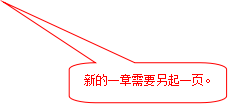 Skopos theory about translation gets rid of the constraints of equivalent translation, and begins to emphasize the subjective initiative of translators. Therefore, the emergence of skopos theory solves problems that other translation theories fail to solve and skopos theory also broadens translation studies, which gives more meaning to translation. In this chapter, the author will gave a brief introduction of definition, the main contents and the principle in skopos theory.
Skopos theory about translation gets rid of the constraints of equivalent translation, and begins to emphasize the subjective initiative of translators. Therefore, the emergence of skopos theory solves problems that other translation theories fail to solve and skopos theory also broadens translation studies, which gives more meaning to translation. In this chapter, the author will gave a brief introduction of definition, the main contents and the principle in skopos theory.
2.1 The Definition of Skopos Theory
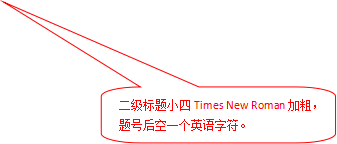
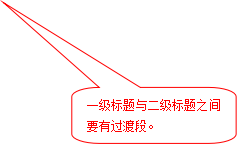 The term skopos is often used to refer to the purpose of translation. The word skopos comes from the Greek term “skopos”. In addition to skopos, “Vermeer also uses related words such as aim, purpose, intention and function. In order to avoid confusion, Nord proposes to make a basic distinction between intention and function: intention is defined from the perspective of the sender, and function refers to the function of the text, which is defined by the expectations, needs, knowledge of the recipient and environmental conditions.” (Liu Zhenjing, 2016: 3) Before the emergence of skopos theory in translation, most theories in the market focused on translation equivalence and often ignored the purpose of translation. There are certain flaws in such translation theories. It is impossible to achieve full parity when translating in other aspects and cultural factors involved in can not be explained clearly. To make up the lack of previous theories, new translation theories have emerged. In the 1980s, German translation theorists Catherine Rice and Hans Weinmill first proposed skopos theory, which is also the functionalist translation theory.
The term skopos is often used to refer to the purpose of translation. The word skopos comes from the Greek term “skopos”. In addition to skopos, “Vermeer also uses related words such as aim, purpose, intention and function. In order to avoid confusion, Nord proposes to make a basic distinction between intention and function: intention is defined from the perspective of the sender, and function refers to the function of the text, which is defined by the expectations, needs, knowledge of the recipient and environmental conditions.” (Liu Zhenjing, 2016: 3) Before the emergence of skopos theory in translation, most theories in the market focused on translation equivalence and often ignored the purpose of translation. There are certain flaws in such translation theories. It is impossible to achieve full parity when translating in other aspects and cultural factors involved in can not be explained clearly. To make up the lack of previous theories, new translation theories have emerged. In the 1980s, German translation theorists Catherine Rice and Hans Weinmill first proposed skopos theory, which is also the functionalist translation theory.
2.2 The Main Contents of Skopos Theory
The core meaning of the concept is that the most important factor in the translation process is the purpose of the overall translation behavior. The purpose of skopos theory means the communicative purpose of the translation, that is, the intended purpose of the translator. In this case, the translator may select the corresponding translation methods and strategies for translation according to the skopos theory, therefore, every translator in the translation process has been given greater flexibility to choose the most suitable one. Skopos theory in translation was proposed by German functional scholar Vermeer, which formed the functional translation theory.
First of all, Vermeer believes that translation is a communicative act and the whole process of translation behavior is determined by purpose. The purpose to be achieved is determined by the “purpose determination means”. One of the most important factors in determining the purpose of translation in Vermeer’s skopos framework is the recipient of the translation. Customers have their own cultural background, expectations for translation and communication needs. Each translation is directed to a certain audience, so it is better for translator to aim at a certain purpose and target audience in the target context. Vermeer believes that the original text is only a source of all the information for the target audience. The translation methods and strategies adopted in the process of translation should reply on the purpose of the overall translation behavior and the recipients of the translation are also the important factors influencing the purpose of translation. Secondly, skopos theory believes that the translator must combine the translation purpose with the special circumstances of the target audience in the translation process. Targeting a certain audience to make the translation has a certain function in the target language environment. Skopos theory puts purpose first, because every translation act needs an established purpose and translators should do everything possible to achieve it. Skopos theory subverts the traditional translation process, puts the translation effect and its translation in the first place. A good translator should be clear about the purpose of translation and then use the appropriate translation methods or translation strategies with reference to the ultimate purpose of translation to meet people’s needs.
2.3 The Main Principles in Skopos Theory
The three principles in skopos theory are: the principle of purpose, the principle of coherence and the principle of loyalty.
Firstly, skopos theory believes that the first principle that all translation activities should follow is the “purpose principle”, that is, “translation should be able to function in the context and culture of the translation in the way that the recipient of the translation expects. The purpose of translation behavior determines the whole translation process, that is, the result determines the method.” (Zhu Yanhua, 2018: 79) According to their own needs, the subject of behavior uses the intermediary role of conscious concepts to pre-conceive behavior goals and results. As an ideology, the principle of purpose reflects human’s practical relationship with objective things. Human practice is based on purpose and the purpose runs through the process of the whole event. Translation is the process of inputting and outputting between different languages. The existence of a thing has its purpose and the translation is the same. The translator achieves the effect of transmitting information through the translation language. The translator uses the principle of purpose to reasonably translate one language into another, which can achieve the expected results to the greatest extent.
The second principle in skopos theory is coherence rule. The principle of coherence is that the translation must meet the standard of intra-lingual coherence, that is, the translation is readable and acceptable, which enables the recipient to understand and make sense in the culture of the target language, the communicative context in which it is used. Coherence is the rule of the permutation, combination of sentences and the way to strengthen language connections and cohesion to make it more smooth, if a sentence translated by a translator cannot reach even the most basic coherence, readers can not read and understand the meaning, even fail to achieve the purpose.
The third principle in skopos theory is fidelity rule. The principle of fidelity means that there should be coherence between the original text and the translated text. This is equivalent to the faithfulness between original text and the translated test but the degree and form of faithfulness with the original text depend on the purpose of the translation and the translator’s understanding of the original text. There are many differences in the grammatical structure between English and Chinese. This requires translators to make some necessary adjustments of the word order in the original text during the process of translating.
III The Brief Introduction of Language Features of Advertising English
In today’s era of global information integration and economic integration, advertising is the largest, fastest and most extensive information delivery medium. Advertising, as a means of product marketing, is a product of economic development and plays a great role in the process of marketing products by enterprises. Advertising is also a part of social formation, which can let those in need see it and give people in need a chance to understand the products. The advertisement plays a vital role for a high-quality company that has a certain influence in the domestic and international markets. A novel slogan can add a lot of value to a company’s product promotion and can convey correct and appropriate product information and product value. The translation of the advertisement directly affects the image of the company’s product in the international market and the public effect of corporate products abroad. In this chapter, the author will mainly analyze three different language features of advertising English.
3.1 Rhetorical Features of Advertising English
The advertisement often uses rhetorical skills in advertising English. Both repetition and order change belong to structural rhetoric and the structural variant forms of repetition in advertising English include rhyme, contrast and parallelism are the two forms of order change. The use of rhetoric in advertising English has a high artistic value in language.
3.1.1 Metaphor
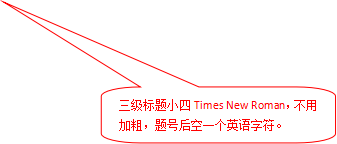
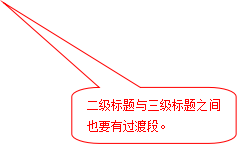 “The first rhetoric device is metaphor. The use of figurative rhetoric in advertising slogans can make esoteric truths obvious, make people’s images vivid, objects can be visualized and metaphor also gives people a rich imagination. There is one advertisement that use metaphor in the following example.” (Yang Xiaoyan, 2000: 5)
“The first rhetoric device is metaphor. The use of figurative rhetoric in advertising slogans can make esoteric truths obvious, make people’s images vivid, objects can be visualized and metaphor also gives people a rich imagination. There is one advertisement that use metaphor in the following example.” (Yang Xiaoyan, 2000: 5)
Example 1: We’re the dot. In. Com. (Sun Microsystems)
This slogan connects microsystems to the Internet and informs consumers that solar microsystems are just as convenient as web cluster.
Many brands are good at using a variety of rhetorical techniques to form a certain artistic conception, which greatly increases the sales of products. The rhetoric device of pun is widely used in advertising language because pun can make language expression more subtle, humorous and pun also can leave readers with imagination.
3.1.2 Pun
The second rhetoric device is pun. “Pun refers to the use of polysemy or homophone conditions in a certain language environment to intentionally make sentences have two different meaning. Pun can be divided into homophonic pun, semantic pun, part-of-speech pun, and parody pun.” (Yang Xiaoyan, 2000: 13) There are different kinds of puns as follows.
Example l: homophonic pun. The “in” idea in business travel. (Hilton Inns)
Example 2: semantic pun. Fresh up with 7-up. (7-up)
Example 3: part of speech pun. Coke refreshes you like no other can. (Coke)
Example 4: parody pun. Where there is a way, there is a Toyota. (Toyota)
The above slogans use the rhetoric device of pun to add interest and readability to the original dull advertisements, which can increase the probability that readers buy the product. Homophonic puns formed by homophonic or near-in terms. In the first example, it represents the most fashionable and trendy homonym with “inn”, telling consumers that the Hilton Hotel is the most fashionable choice and the intimate service to the hotel will make you feel comfortable as if you were at home. Semantic pun uses the polysemy of a word in a specific environment. In the second example, “7” is an auspicious number in western countries and means lively upward, sober. At the same time, “7-up” is also a trademark of beverages, which allows consumers to read rhythmically and make it clear in mind. In the third example, this is an advertisement for coke. The word “can” in the sentence is a pun, that is, the modal verb indicates that it can be understood as various canned drinks. Imitating puns is to imitate famous proverbs in the formal structure according to the needs of expression. In the fourth example, it is an advertisement for Toyota Motor and the producer cleverly used the famous saying that“where there is a will, there is a way”, it can easily attract the attention of consumers. At that time, it is natural for consumers to think of this Toyota advertisement and the purpose of the advertisement can be achieved.
V Conclusion
At present, the research on translation strategies in advertising English is not sufficient in the field of linguistics. This article is based on the analysis of the characteristics of advertising English, and the translation strategies of advertising English from the perspective of skopos theory. Therefore, the main contributions of this paper can be summarized as follows.
First, advertising English, as the basis of international trade activities and cultural exchanges, plays an important role in improving the competitiveness of goods in the international market and promoting the development of international trade. The positive role of advertising English in the international market is acknowledged in this article. Secondly, this article specifically introduces the brief introduction of skopos theory, including the definition, main contents and principles of skopos theory. Third, some specific rhetorical features not only allow readers to access more information about the vocabulary and syntactic features of advertising English, but also lay the foundation for the author’s further research on the perspective of skopos theory and translation strategies of advertising English. Fourth, research on the particularity of advertising English and the translation strategies of advertising English shows that advertising English language is a discipline that exists in the English translation system and refers to a more special kind of translation in English translation. Based on the introduction of advertising English and combined with the unique style characteristics of advertising English, this article is to turn written guidance into the principle of advertising English.
In the process of translating advertising English, translators should fully grasp the differences between advertising English style and other English, effectively use the principles and translation strategies of advertising English from the perspective of skopos theory and master differentiated advertising English translation skills and strategies, which can not only improve the translator’s understanding of advertising English but also improve the level of translation. At the same time, in the process of translation, translators should also pay attention to the language style of the target language and respect the cultural background of the target language so that the two languages and cultures can be effectively communicated. Successful advertising English translation can grab the attention of consumers and promote consumers to purchase goods. It has a positive effect on the stable development of international trade, is conducive to improve economic globalization and promotes the orderly advancement of advertising English translation.
Due to limited resources, it is difficult to avoid the shortcomings of the research field, so it is understandable that this article cannot be comprehensively introduced. In certain situations, thoughtful reasoning, the generation of diversity, pattern detection and learning capabilities are part of flexible thinking. To some extent, the lack of first-hand and related information collection has caused trouble for this article. As a result, examples and translations may not be fully updated in a timely manner. Not all the cases presented throughout the paper are realistic and necessary. Therefore, some representative examples were designed to provide valuable suggestions for further research. The third problem is that the theories contained are not entirely suitable for the general principles applied in cross-cultural business communication. In short, according to the author’s point of view or other research, universality and applicability should be considered to conduct a specific analysis of specific issues and translation strategies of advertising English should be applied mechanically to determine whether it meets actual needs.
Although this article is not comprehensive enough to prove the author’s personal point of view, some applications and limitations of skopos theory in advertising English translation strategies still require more effort and time to discuss.
 如果正文部分有图表:
如果正文部分有图表:
表2-1 城乡居民之间收入差距变化
年份 |
农村居民家庭人均纯收入 |
城镇居民家庭人均可支配收入 |
比率 (B/A) |
绝对数(A) (元) |
指数 |
绝对数(B) (元) |
指数 |
1978 |
133.6 |
|
|
|
|
1979 |
191.3 |
|
|
|
|
1980 |
397.6 |
|
|
|
|
1981 |
423.8 |
|
|
|
|
|
|
|
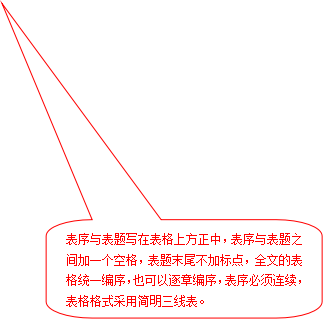
|
|
|
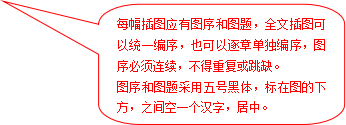

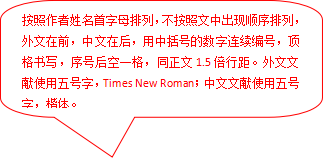
 附件5(在论文写作时,去掉“附件5”这三个字)
附件5(在论文写作时,去掉“附件5”这三个字)
Bibliography
[1]Geis, Michael L. The Language of Television Advertising[M]. New York Academic Press, Inc, 1982.
[2]Harris, Seldon. The Nature of Modern Advertising[M]. Toronto/London University of Toronto Press, 1962.
[3]Leech, Geoffrey N. Semantics: The Study of Meaning[M]. 200 ed. Harfnondsworth: Penguin Books Ltd, 1981. 
 [4] Nord, Christiane. Translating as a Purposeful Activity[M]. Shanghai: Shanghai Foreign Language Education Press, 2001.
[4] Nord, Christiane. Translating as a Purposeful Activity[M]. Shanghai: Shanghai Foreign Language Education Press, 2001.
[5] Norman Douglas. An Introduction to Contemporary Advertising[M]. London: Jonathan cape, 1998.
[6] 陈恪清.试论广告英语的句法特点[J]. 河南大学学报,1997:34.
[7] 崔雁.广告英语的特点及其翻译探索[M].东南大学出版社,2016(3): 13-17.
[8] 古国生.功能对等理论指导下的广告英语翻译研究[J].黑龙江教育学院报,2017:128-130.
[9] 胡佳.浅析功能对等理论在独立学院大学英语翻译教学中的应用[J].课程教育研究, 2015: 80-81.
[10] 洪莹, 彭一帆.浅谈英语广告语翻译策略[J]. 中外企业家,2017:13.
[11] 刘宓庆.文体与翻译[M]. 北京: 中国对外出版公司, 1985:67.
[12] 李蓂,马彩梅.国内广告翻译研究一览[J]. 中国科技翻译,2005,18(1): 37-41.
[13] 陈宏薇.汉英翻译基础[M]. 上海: 上海外语教育出版社, 1998:78.
请注意:考虑到参考文献形式多种多样,因此本页所列的内容,仅供学生参考相关文献的写法,并不是规定字体字号的格式!!

[1] 王阳. 第三人称叙事的形式叙述者的限定[J]. 四川外语学院学报, 2000(1):1-6.
 [2] HAIMAN J. The Iconicity of Grammar[J]. Language, 1980(56):515-540.
[2] HAIMAN J. The Iconicity of Grammar[J]. Language, 1980(56):515-540.
 [3] 陈牧. 拓扑绝缘体薄膜表面态和掺杂效应的STM研究[D]. 清华大学, 2012.
[3] 陈牧. 拓扑绝缘体薄膜表面态和掺杂效应的STM研究[D]. 清华大学, 2012.
 [4] 吕叔湘,朱德熙. 语法修辞讲话[M]. 北京:商务印书馆, 1951.
[4] 吕叔湘,朱德熙. 语法修辞讲话[M]. 北京:商务印书馆, 1951.
[5] SEARLE,J R. Speech Acts[M]. Cambridge: Cambridge University Press, 1975.

 [6] 王承绪,徐辉. 发展战略:经费、教学科研与质量—中英高等教育学术讨论会论文集[C]. 杭州:杭州大学出版社, 1993.
[6] 王承绪,徐辉. 发展战略:经费、教学科研与质量—中英高等教育学术讨论会论文集[C]. 杭州:杭州大学出版社, 1993.
[7] 谢希德. 创造学习的新思路[N]. 人民日报, 1998-12-25(10).
[8] 魏士益,许明坤,叶有芝. 用于制备光学活性环戊烯酮化物的方法及由其制得的环戊烯酮化物[P]. 中国:2007100036145, 2014-11-19.
 [9] 王明亮. 关于中国学术期刊标准化数据库系统工程的进展[EB/OL]. http://www.cajcd.edu.cn/ Pub/wml.txt/980810-2.html,1998- 08-16/1998-10-04.
[9] 王明亮. 关于中国学术期刊标准化数据库系统工程的进展[EB/OL]. http://www.cajcd.edu.cn/ Pub/wml.txt/980810-2.html,1998- 08-16/1998-10-04.
[10] 联合国人口基金会. 2007年世界人口状况调查报告[R]. 纽约:UN, 2007.

 [11] SEARLE,J R. Metaphor[M]//ORTONY, A. Metaphor and Thought.Cambridge: CambridgeUniversity Press, 1979:72-123.
[11] SEARLE,J R. Metaphor[M]//ORTONY, A. Metaphor and Thought.Cambridge: CambridgeUniversity Press, 1979:72-123.
[12] GB/T 16159-1996, 汉语拼音正词法基本规则[S]. 北京:中国标准出版社, 1996.

附件6(在论文写作时,去掉“附件6”这三个字)
Acknowledgements
 ××××××××××××××××××××××××××××××××××××××××××××××××××××××××××××××××××××××××××××××××××××××××××××××××××××××××××××××××××××××××××××××××××××××××××××××××××××××××××××××××××××××××××××.
××××××××××××××××××××××××××××××××××××××××××××××××××××××××××××××××××××××××××××××××××××××××××××××××××××××××××××××××××××××××××××××××××××××××××××××××××××××××××××××××××××××××××××.
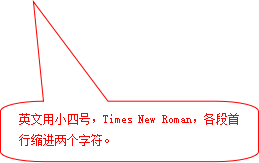
附件7(在论文写作时,去掉“附件7”这三个字。如果论文没有附录,可删除此部分。)
 Appendix
Appendix